
nordgrenexperience
62 posts
Latest Posts by nordgrenexperience
The Quadski gives the term “all-terrain vehicle” a whole new meaning.
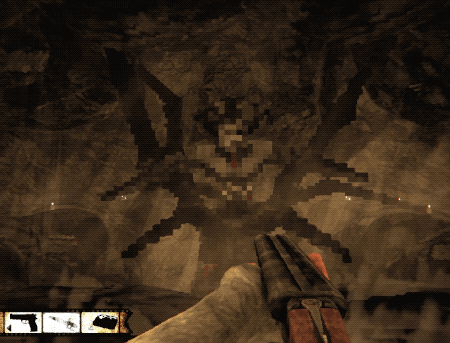
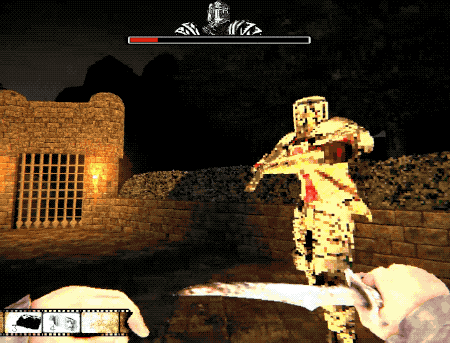
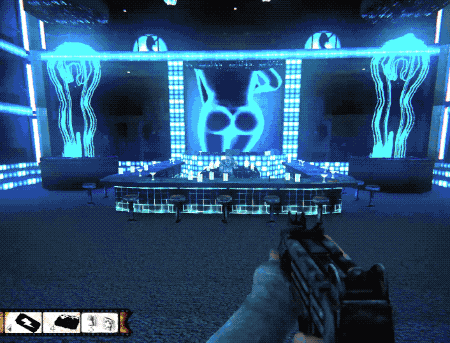

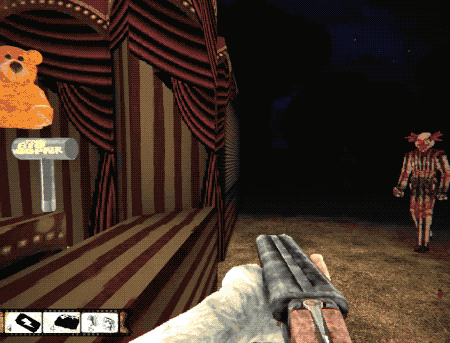

Solace Dreams is an incredible Silent Hill and Dark Souls inspired survival horror DOOM total conversion mod where each area is a totally different nightmare!
Check Out a Gameplay Video Here
Check out the meteor shower this week. At it ‘s peak tomorrow morning Aug 12 between 2 am and sunrise. nordgrenexperience.com
The Perseid Meteor Shower Is Here!

Image Credit: NASA/Bill Ingalls
The Perseids are at their peak this week!
The Perseid meteor shower, one of the biggest meteor showers of the year, will be at its brightest early in the morning on Wednesday, August 12. Read on for some tips on how to watch the night sky this week – and to find out: what exactly are the Perseids, anyway?

Credit: NASA/Bill Ingalls
Your best chance to spot the Perseids will be between 2 AM and dawn (local time) the morning of August 12. Find a dark spot, avoid bright lights (yes, that includes your phone) and get acclimated to the night sky.
Your eyes should be at peak viewing capacity after about 30 minutes; though the Moon may block out some of the dimmer meteors, you should still be able to see up to 15-20 an hour. If you’re not an early bird, you can try and take a look soon after sunset (around 9 PM) on the 11th, though you may not see as many Perseids then.

Credit: NASA/MEO
If it’s too cloudy, or too bright, to go skywatching where you are, you can try again Wednesday or Thursday night – or just stay indoors and watch the Perseids online!
Our Meteor Watch program will be livestreaming the Perseids from Huntsville, Alabama on Facebook (weather permitting), starting around 9 p.m. EDT on August 11 and continuing through sunrise.
So… why are they called the Perseids?
Because all of a meteor shower’s meteors have similar orbits, they appear to come from the same place in the sky – a point called the radiant.

The radiant for the Perseids, as you might guess from the name, is in the constellation Perseus, found near Aries and Taurus in the night sky.
But they’re not actually coming from Perseus, right?

Credit: NASA/Joel Kowsky
Right! The Perseids are actually fragments of the comet Swift-Tuttle, which orbits within our solar system.
If you want to learn more about the Perseids, visit our Watch the Skies blog or check out our monthly “What’s Up” video series. Happy viewing!
Make sure to follow us on Tumblr for your regular dose of space: http://nasa.tumblr.com

Look for the latest in personal electronics at nordgrenexperience.com

Find at nordgrenexperience.com

Check out the next mission for Mars and follow NASA on social media.Technology available at nordgenexperience.com
7 Things to Know about the Perseverance Mars Rover

We’re set to launch the Mars 2020 Perseverance rover mission from Cape Canaveral, Florida, on July 30. The rover is loaded with scientific instruments and advanced technology, making it the largest, heaviest and most sophisticated vehicle ever sent to the Red Planet.
What is Perseverance’s mission and what will it do on Mars? Here are seven things to know:
1. Perseverance draws on the NASA – and scientific – spirit of overcoming challenges

Not only does it have to launch during a pandemic and land on a treacherous planet, it has to carry out its science goals:
Searching for signs of past microbial life
Mapping out the planet’s geology and climate
Collecting rock and other samples for future return to Earth
Paving the way for human exploration
We chose the name Perseverance from among the 28,000 essays submitted during the “Name the Rover” contest. Because of the coronavirus pandemic, the months leading up to the launch in particular have required creative problem solving, teamwork and determination.
2. Perseverance builds on the lessons from other Mars rovers

In 1997, our first Mars rover – Sojourner – showed that a robot could rove on the Red Planet. Spirit and Opportunity, which both landed in 2004, found evidence that Mars once had water before becoming a frozen desert.
Curiosity found evidence that Mars’ Gale Crater was home to a lake billions of years ago and that there was an environment that may have sustained microbial life. Perseverance aims to answer the age-old question – are there any signs that life once existed on Mars?
3. Perseverance will land in a place with high potential to find signs of ancient life

The rover will land in Jezero Crater, a 28-mile wide basin north of the Martian equator. A space rock hit the surface long ago, creating the large hole. Between 3 and 4 billion years ago, a river flowed into a body of water in Jezero the size of Lake Tahoe.
4. Perseverance will also collect important data about Mars’ geology and climate

Mars orbiters have collected images and other data about Jezero Crater from about 200 miles above, but finding signs of past life will need much closer inspection. A rover like Perseverance can look for those signs that may be related to ancient life and analyze the context in which they were found to see if the origins were biological.
5. Perseverance is the first leg of a round trip to Mars

This is the first rover to bring a sample-gathering system to Mars that will package promising samples of rocks and other materials for future return to Earth. NASA and ESA are working on the Mars Sample Return campaign, so we can analyze the rocks and sediment with tools too large and complex to send to space.
6. Perseverance will pave the way for human exploration of the Red Planet

Two packages – one that helps the rover autonomously avoid hazards during landing (TRN) and another that gathers crucial data during the trip through Mars’ atmosphere (MEDLI2) – will help future human missions land safely and with larger payloads on other worlds.
There are two instruments that will specifically help astronauts on the Red Planet. One (MEDA) will provide key information about the planet’s weather, climate and dust activity, while a technology demonstration (MOXIE) aims to extract oxygen from Mars’ mostly carbon-dioxide atmosphere.
7. You get to ride along

Perseverance and other parts of the Mars 2020 spacecraft feature 23 cameras, which is more than any other interplanetary mission in history. Raw images from the camera are set to be released on the mission website.
There are also three silicon chips with the names of nearly 11 million people who signed up to send their names to Mars.
And you can continue to follow the mission on Twitter and Facebook.
Make sure to follow us on Tumblr for your regular dose of space: http://nasa.tumblr.com
Have you set yourself up with the latest in VR equipment? Checkout nordgrenexperience.com






Player 2.0 by Ching Yeh
New way to look at life Virtual Reality glasses at nordgrenexperience.com
i love living in the future
Looking through different glasses VR check out nordgrenexperience.com

“A WHOLE NEW WOOOOOOORLD, A DAZZLING PLACE I NEVER KNEEEEEEW…”
Need to update your VR glasses? Checkout https://bit.ly/325FmpY

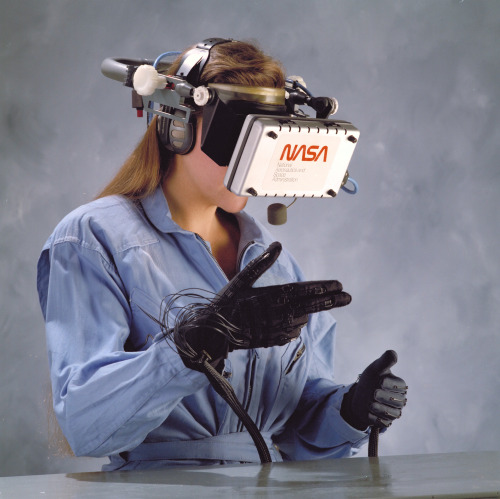
Exploring virtual reality at NASA’s Ames Research Center, 1989.
Virtual Reality from nordgrenexperience.com


tvshows, summer, cheesecake, swimming, nachos, christmas, night, dogs, phone, rice, countryside, f.r.i.e.n.d.s. nordgrenexperience.com
movies or tv shows, summer or winter, banana bread or cheesecake, swimming or hiking, nachos or popcorn, christmas or halloween, day or night, dogs or cats, phone or laptop, potato or rice, city or countryside, f.r.i.e.n.d.s. or how i met your mother

Find Electronics for Home, Office, and ON The Go at nordgenexperience.com
Streaming rather than cable or satellite dish. Making sure you have a high speed modem to utilize the bandwidth available from your internet service. TV accessories from nordgrenexperience.com
I am part of the transitional boundary between two generations. I‘m not quite a Millennial, but I do not identify as Gen Z by any means. I am old enough to vaguely remember the 90s, but not to appreciate them; I grew up on reruns of 90s shows, and watched movies from the 80s and 90s because that’s just what my parents owned when I was born.
I saw the fall of analog and the rise of digital; I grew up with a VCR (which I still own to this day), and witnessed the transition to DVD. We are currently in the middle of a new transition away from physical media entirely, and I’m not sure I like it; I want to be able to have things, not just to license a copy that can be taken away at the studio’s whims. Everything is a rights license or a subscription now, bleeding you dry so you can have access rather than ownership.
Cellphones became ubiquitous in my lifetime; when I was a kid, nobody had one, they were big and expensive, and you had to pay for each minute. If you went over your monthly allotment, you would either be charged an arm and a leg or your phone would just stop working, dropping all calls because you just don’t have any time left. Does anyone remember when they had text limits? It was the dark ages! I didn’t get a cellphone until I was in high school, and now I can’t imagine letting your kids leave the house without one.
Smartphones didn’t even exist until I was in middle school, and now they’re the default, the standard. They’ve revolutionized the way we communicate, they’ve gotta be the most influential technology of the 21st century, hands down. It peaked early. That said, smart devices are the bane of my existence because now we live in an Orwellian surveillance state where the government and private companies basically own you. It’s depressing.
I’m sure every generation goes through phases like this; what is history if not one prolonged period of change. Nothing is static, there is no long term status quo, everything keeps moving forward no matter what. The progress of time is the most predictable thing in existence, yet we are almost always blindsided by it. Like, I know 2008 was 11 years ago, but I haven’t really internalized that fact, it’s abstract, because 2008 is simultaneously yesterday and ancient history from a lifetime ago.
Find a new phone at nordgenexperience.com


Addicted to positive stimulus...
Is your battery not holding a charge, upgrade at nordgrenexperience.com




Google. patreon.com/chrishallbeck
Check out the VR glasses at nordgrenexperience.com

VR Shinecon 6.0 360 Degree Stereo 3D Virtual Reality Glasses

“A WHOLE NEW WOOOOOOORLD, A DAZZLING PLACE I NEVER KNEEEEEEW…”
It’s interesting to watch the procedures needed to make repairs during a spacewalk. They don’t have the luxury of being able during a plumbing project to make 4 trips to the hardware store for parts I broke and have to make a new drain line or supply line.
From Discovering the Secrets of the Universe to In-Space Servicing, We’ve Got The Tools for the Job
If you need to fix something on Earth, you could go to a store, buy the tools you need, and get started. In space, it’s not that easy.

Aside from the obvious challenges associated with space (like it being cold and there being no gravity), developing the right tools requires a great deal of creativity because every task is different, especially when the tools need to be designed from scratch. From the time an engineer dreams up the right tools to the time they are used in space, it can be quite a process.
On Nov. 15, astronauts Luca Parmitano and Drew Morgan began a series of spacewalks to repair an instrument called the Alpha Magnetic Spectrometer (AMS-2) on the exterior of the International Space Station. The first of four spacewalk focused on using specialized tools to remove shields and covers, to gain access to the heart of AMS to perform the repairs, and install a new cooling system.

The debris shield that covered Alpha Magnetic Spectrometer floats away toward Earth as astronaut Drew Morgan successfully releases it.
Once repaired, AMS will continue to help us understand more about the formation of the universe and search for evidence of dark matter and antimatter.
These spacewalks, or extravehicular activities (EVAs), are the most complex of their kind since the servicing of the Hubble Space Telescope. AMS is particularly challenging to repair not only because of the instrument’s complexity and sensitivity, but also because it was never designed to be fixed. Because of this design, it does not have the kinds of interfaces that make spacewalks easier, or the ability to be operated on with traditional multi-purpose tools. These operations are so complex, their design and planning has taken four years. Let’s take a look at how we got ready to repair AMS.

Thinking Outside of the (Tool) Box
When designing the tools, our engineers need to keep in mind various complications that would not come into play when fixing something on Earth. For example, if you put a screw down while you’re on Earth, gravity will keep it there — in space, you have to consistently make sure each part is secure or it will float away. You also have to add a pressurized space suit with limited dexterity to the equation, which further complicates the tool design.

In addition to regular space complications, the AMS instrument itself presents many challenges — with over 300,000 data channels, it was considered too complex to service and therefore was not designed to one day be repaired or updated if needed. Additionally, astronauts have never before cut and reconnected micro-fluid lines (4 millimeters wide, less than the width of the average pencil) during a spacewalk, which is necessary to repair AMS, so our engineers had to develop the tools for this big first.

With all of this necessary out-of-the-box thinking, who better to go to for help than the teams that worked on the most well-known repair missions — the Hubble servicing missions and the space station tool teams? Building on the legacy of these missions, some of our same engineers that developed tools for the Hubble servicing missions and space station maintenance got to work designing the necessary tools for the AMS repair, some reworked from Hubble, and some from scratch. In total, the teams from Goddard Space Flight Center’s Satellite Servicing Projects Division, Johnson Space Center, and AMS Project Office developed 21 tools for the mission.
Designing and Building
Like many great inventions, it all starts with a sketch. Engineers figure out what steps need to be taken to accomplish the task, and imagine the necessary tools to get the job done.
From there, engineers develop a computer-aided design (CAD) model, and get to building a prototype. Tools will then undergo multiple iterations and testing with the AMS repair team and astronauts to get the design just right, until eventually, they are finalized, ready to undergo vibration and thermal vacuum testing to make sure they can withstand the harsh conditions of launch and use in the space environment.
Hex Head Capture Tool Progression:

Hex Head Capture Tool Used in Space:

Practice Makes Perfect
One of the reasons the AMS spacewalks have been four years in the making is because the complexity of the repairs required the astronauts to take extra time to practice. Over many months, astronauts tasked with performing the spacewalks practiced the AMS repair procedures in numerous ways to make sure they were ready for action. They practiced in:
Virtual reality simulations:

The Neutral Buoyancy Laboratory:

The Active Response Gravity Offload System (ARGOS):

Astronauts use this testing to develop and practice procedures in space-like conditions, but also to figure out what works and doesn’t work, and what changes need to be made. A great example is a part of the repair that involves cutting and reconnecting fluid lines. When astronauts practiced cutting the fluid lines during testing here on Earth, they found it was difficult to identify which was the right one to cut based on sight alone.
The tubes on the AMS essentially look the same.

After discussing the concern with the team monitoring the EVAs, the engineers once again got to work to fix the problem.

And thus, the Tube Cutting Guide tool was born! Necessity is the mother of invention and the team could not have anticipated the astronauts would need such a tool until they actually began practicing. The Tube Cutting Guide provides alignment guides, fiducials and visual access to enable astronauts to differentiate between the tubes. After each of eight tubes is cut, a newly designed protective numbered cap is installed to cover the sharp tubing.

Off to Space

With the tools and repair procedures tested and ready to go, they launched to the International Space Station earlier this year. Now they’re in the middle of the main event – Luca and Drew completed the first spacewalk last Friday, taking things apart to access the interior of the AMS instrument. Currently, there are three other spacewalks scheduled over the course of a month. The next spacewalk will happen on Nov. 22 and will put the Tube Cutting Guide to use when astronauts reconnect the tubes to a new cooling system.
With the ingenuity of our tool designers and engineers, and our astronauts’ vigorous practice, AMS will be in good hands.

Check out the full video for the first spacewalk. Below you can check out each of the tools above in action in space!
Debris Shield Worksite: 2:29:16 – Debris Shield Handling Aid 2:35:25 – Hex Head Capture Tool (first) 2:53:31 – #10 Allen Bit 2:54:59 – Capture Cages 3:16:35 – #10 Allen Bit (diagonal side) 3:20:58 – Socket Head Capture Tool 3:33:35 – Hex Head Capture Tool (last) 3:39:35 – Fastener Capture Block 3:40:55 – Debris Shield removal 3:46:46 – Debris Shield jettison
Handrail Installations: 4:00:53 – Diagonal Beam Handrail Install 4:26:09 – Nadir Vacuum Case Handrail Install 4:33:50 – Zenith Vacuum Case Handrail InstallVertical Support Beam (VSB)
Vertical Support Beam (VSB) Worksite: 5:04:21 – Zip Tie Cutter 5:15:27 – VSB Cover Handling Aid 5:18:05 – #10 Allen Bit 5:24:34 – Socket Head Capture Tool 5:41:54 – VSB Cover breaking 5:45:22 – VSB Cover jettison 5:58:20 – Top Spacer Tool & M4 Allen Bit 6:08:25 – Top Spacer removal 7:42:05 - Astronaut shoutout to the tools team

Find the headphones for you, check out nordgrenexperience.com

Outside.
Chrishallbeckstore.Com

Paul McCartney during the recording of ‘Hey Jude’ at Trident Studios, July 1968.
Things I keep AND recommend you keep in a travel bag (For Autistics)
-Noise blocking headphones, Awesome when you have to sit around loud people and don’t want any noise
-Earbuds/Headphones, for listening to music or watching videos
-Tablet/Phone/Ipod If you have one, perfect for playing games or listening to music or watching videos
-Tangles, I use the Tangle Jr. but overall it’s awesome for fidgeting
-Chewey necklaces, I like to use the ones that look like normal jewelry, in case I’m around people that are rude when I stim
-Fidget Cube, I love these, easy to use in your pockets so you don’t have to deal with judgemental people
-Travel pecs book if you need it, I get pretty Non-Verbal in public, so this helps me tell people what I need/want. My travel pecs book is just smaller and only has things to do with traveling, so I have stuff in there like restaurants, stores, the food I want to eat etc. I also have it so I can change out the pecs that would be relevant to that trip.
-Stress ball, I have one that is shaped like an alien, so if you can find one that relates to your special interest that makes it even better
-Plastic baggie full of textured items, mine has things like fabrics, sandpaper, feathers, and straws
-Something to do with your special interest, it can be a book, a stuffed animal, anything really
-Small bottles of scented oils, if I’m going out to eat it helps distract me from the other smells in the restaurant
And that’s about it, I use a pretty big bag that has a lot of room in it. Sometimes if I’m going to be gone overnight I also bring my weighted blanket and weighted stuffed dinosaur.

How to talk to me when I have headphones on: Don’t.



I interrupt the Kuji posts to bring you this! Here we have the headphones, and playbutton that were available during the Pupupu Train theme! I haven’t tried them out yet, but I’ll be sure to make an updated post regarding it later on. For now, here’s a few shots of how they look like!
Wireless Bluetooth Game Controller Joystick for Sony PS3

The Quadski gives the term “all-terrain vehicle” a whole new meaning.
Take photos and videos underwater with your phone. 📸


2003 Hasbro Neopets Handheld Interactive Electronic Game
